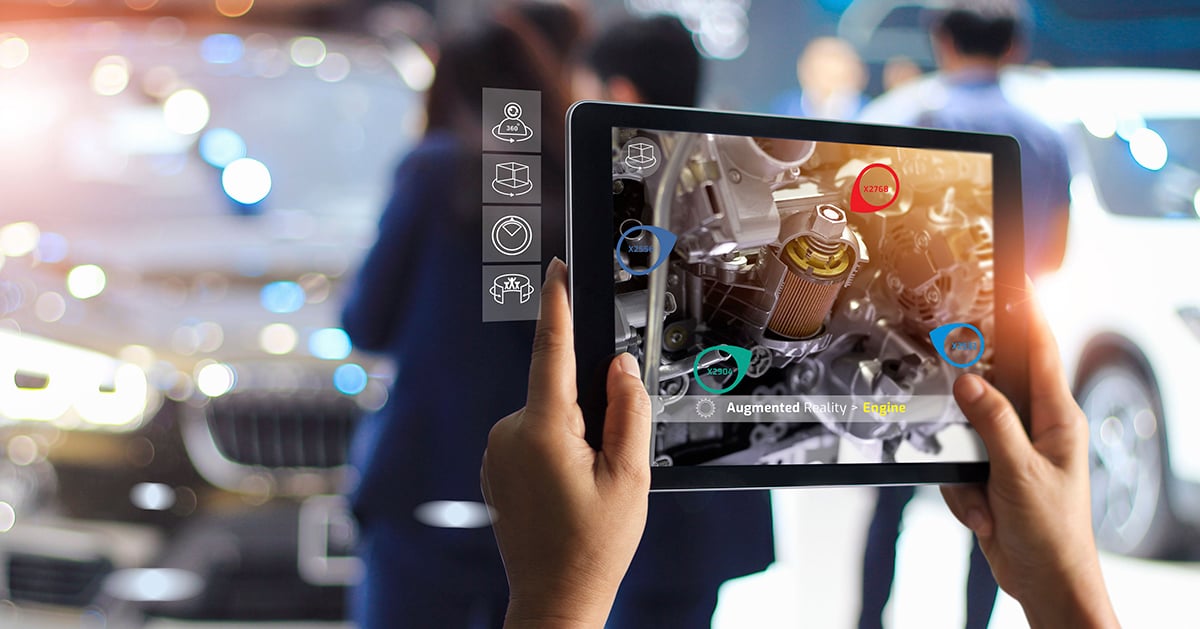How Can Augmented Reality and AI Better Help us Adapt to the (New Normal)?
There’s no question that technology will play a critical role in the post-pandemic future of the ways we live, work and play.
From an increasing reliance on videoconferencing to increased security requirements like access control systems and more, audiovisual solutions and managed services will help us collectively forge a new path forward that not only answers the disruption caused by the COVID-19 pandemic, but helps ensure global contingencies for future crises of this magnitude are more robust.
And augmented reality and artificial intelligence will have large parts to play along that journey.
With innovative uses being created every day, these two cutting-edge technologies will help the world practice preventative measures, such as social distancing, in the immediate term while simultaneously opening doors to an exciting and immersive future to come.

The Short-Term Roles of AI and AR in the Post-Pandemic Digital Landscape
Even as the globe collectively works toward a return to business as usual – or as near an approximation of it as is possible in what’s likely to be a “new normal” – solutions that aid in the effort to maintain social distancing and other preventative measures will be paramount.
Office spaces will open for business and, eventually, consumers will once again be flocking to museums, shopping malls, and more and students will return to school.
However, what if there was a safer way to more slowly reopen the world without sacrificing the engagement, immersion and stories you’re looking to bring to end users?
With AI and AR, that could be possible.
Particularly in the case of AR (and its siblings virtual reality and extended reality), virtual experiences can be developed that deliver true immersion without unnecessary gathering or contact.
Picture a company’s workforce returning to the office for the first time. Social distancing measures will still be key, so employees need to remain apart while working, but information still needs to be disseminated, ideas still need to be shared, and connections still need to be forged.
What if there were specific points throughout the space where, simply by using their mobile device, employees could get access to real-time information about safety measures, meetings, and more? This same augmented reality signage could also be leveraged in other spaces, such as museums, offering customers a thorough way to guide themselves through the experience without ever having to break social distancing measures.
Similarly, augmented and virtual reality solutions could elevate the education experience, bringing labs and classrooms to students and allowing for remote learning unlike anything the world has seen before. While the digital equity gap would need to be addressed for such solutions to see truly widespread adoption, innovation and potential mass production of AR and VR-capable devices marches on continuously.
AI could fill a similar role in the practicing of social distancing, with machine learning and true artificial intelligence driving interactive experiences that don’t lean on direct, human-to-human communication. For every process or service that can be automated through an innovative and robust AI solution, that’s one fewer physical interaction that prevents social distancing – and often bogs down what could be a seamless experience.
This shift toward AI solutions could also benefit both employers and employees – with some processes, information sharing and more automated, more room will be left for sick employees to stay home, remote work to become a greater part of companies’ business plans for the long haul, and more.
In the immediate, post-pandemic world, then, the niche for AI and AR solutions seems to be clear – they will help us practice effective social distancing without detracting from effective communication and the creation of truly immersive experiences.
In fact, the experiences of the future could be more immersive than ever before.

The Future of AI and AR in Delivering Immersive Experiences
The overarching forecast for both AI and AR is a promising one – while automation and integration of these technologies sometimes raises eyebrows among those worried they could lead to fewer jobs for human beings, the reality is that these innovations will create an entirely new approach to the way we live, work and play.
In the case of AI, it’s not about taking jobs currently fulfilled by humans. It’s about elevating experiences and employees by automating certain processes and tasks, learning on the spot, and delivering entirely new ecosystems for employees to thrive in.
AI will also transform the ways you interact and control your AV solutions, helping deliver real-time insights and integrate entire systems into easy-to-control, holistic packages. AI could also radically transform the way managed services are delivered, with predictive maintenance, robust data and more ensuring even better uptime and functionality.
Essentially, AI is offering a multitude of benefits that can be distilled into one central concept – simplicity. With thorough automation, actionable insights and unprecedented visibility and speed, your AV solutions will be more powerful than ever before.
And the potential for AR and the entirety of the “XR Revolution”, including virtual reality and mixed reality, is even more exciting.
AR’s ability to overlay digital information over physical spaces is a game-changer for experience design, but also for other aspects of AV solutions. AR can deliver key information to guests, both logistical and educational, but it can also empower technicians to train better and gain increased visibility into the products and solutions they’re being asked to maintain.
For customers, the very ways they shop, consume entertainment, and more will be transformed in the wake of further extended reality innovation. Today’s consumers and end users, both in the commercial and corporate space, are after seamless, simple experiences that still deliver powerful and memorable immersion and communication.
In museums and other physical experience spaces, virtual and augmented reality can transport customers to different times and places. In retail spaces, shoppers will be guided through shopping experiences and given virtual ways to view and test products. In corporate settings, virtual meetings will take place across continents, and, in education, students around the globe will help reshape the way we learn forever.
And that’s just the tip of the iceberg.
In short, it’s all about understanding the needs of the end user and delivering a unique, multisensory experience that inspires.
In the quest for robust and innovative AI and AR solutions, AV solutions and integrators will lead the way in helping the world keep pace, just as they have for innumerable technologies in the past.
—
Click here to learn more about how Electrosonic is helping lead that charge.









